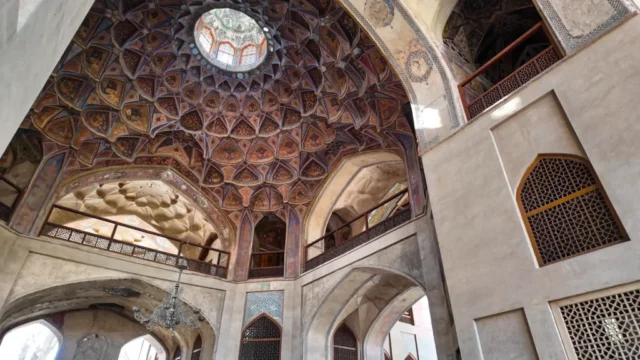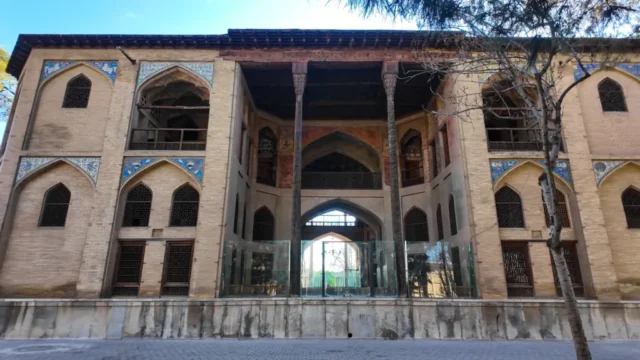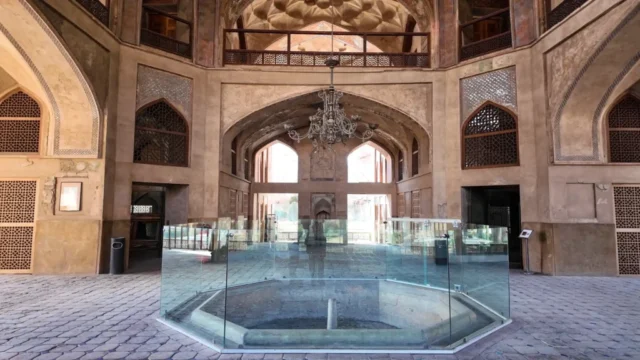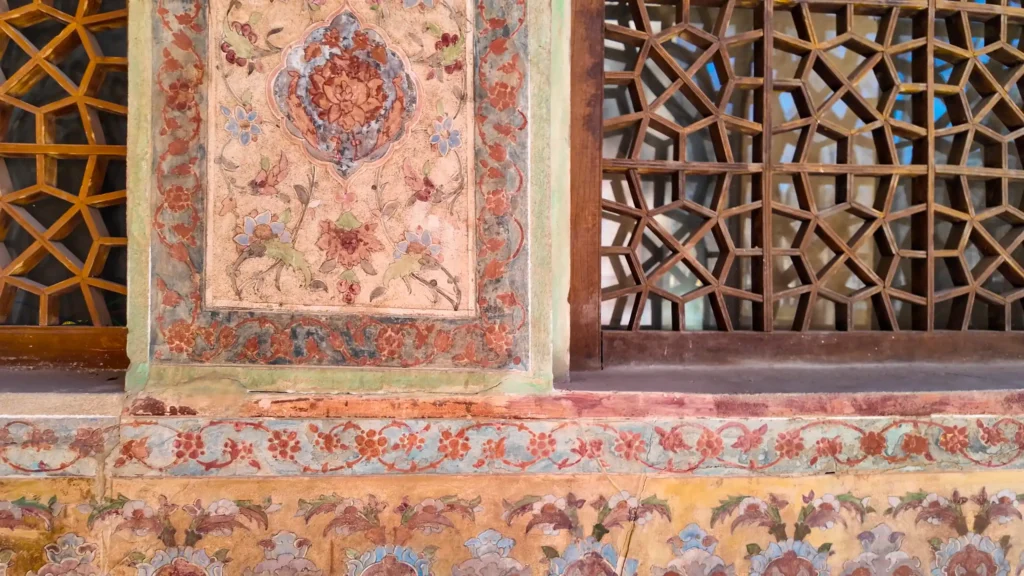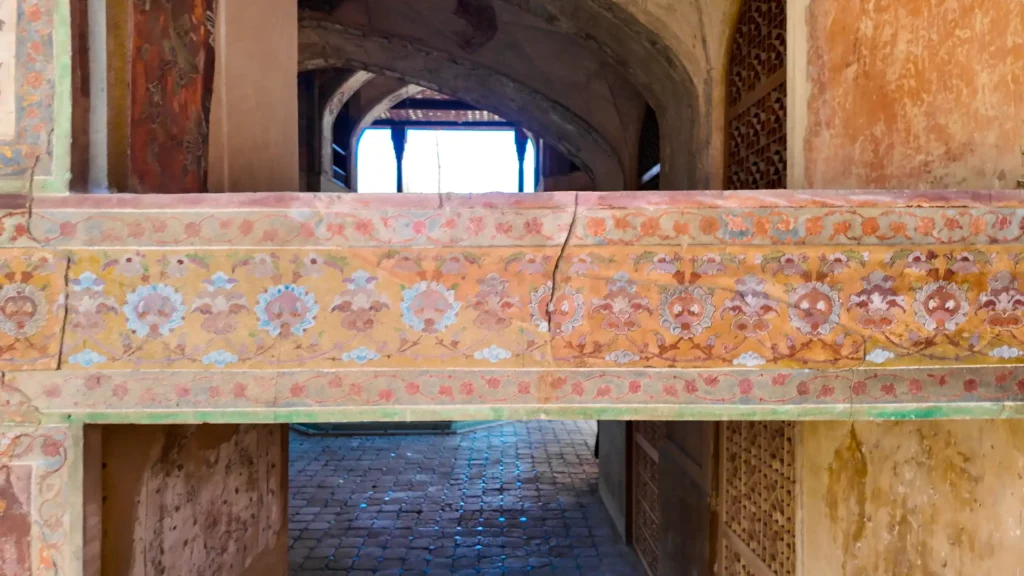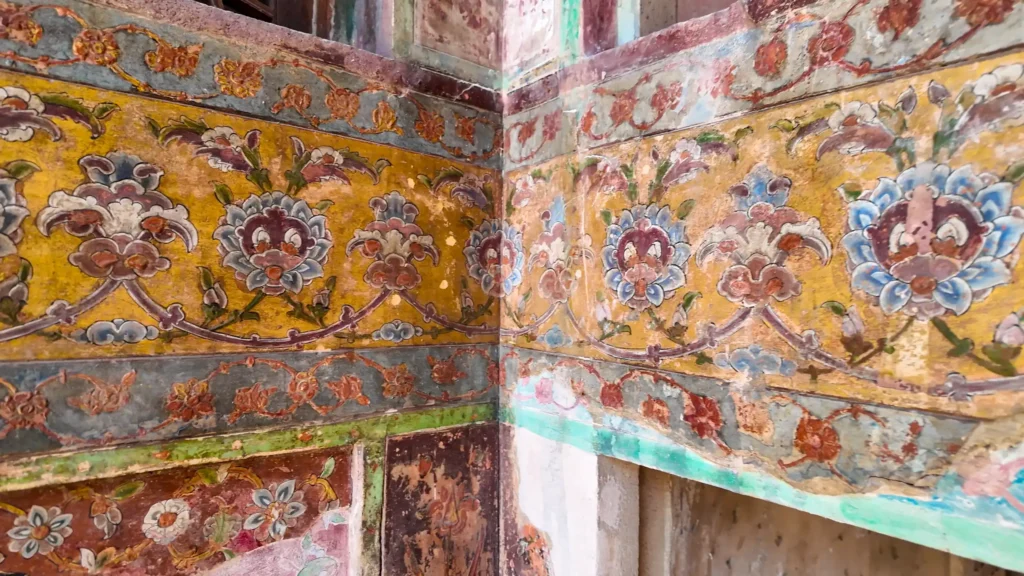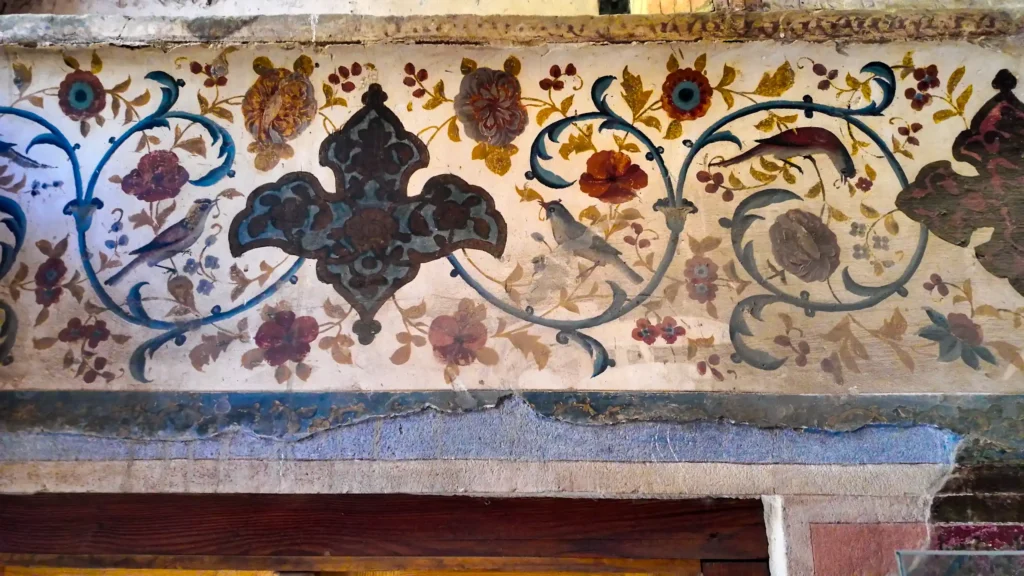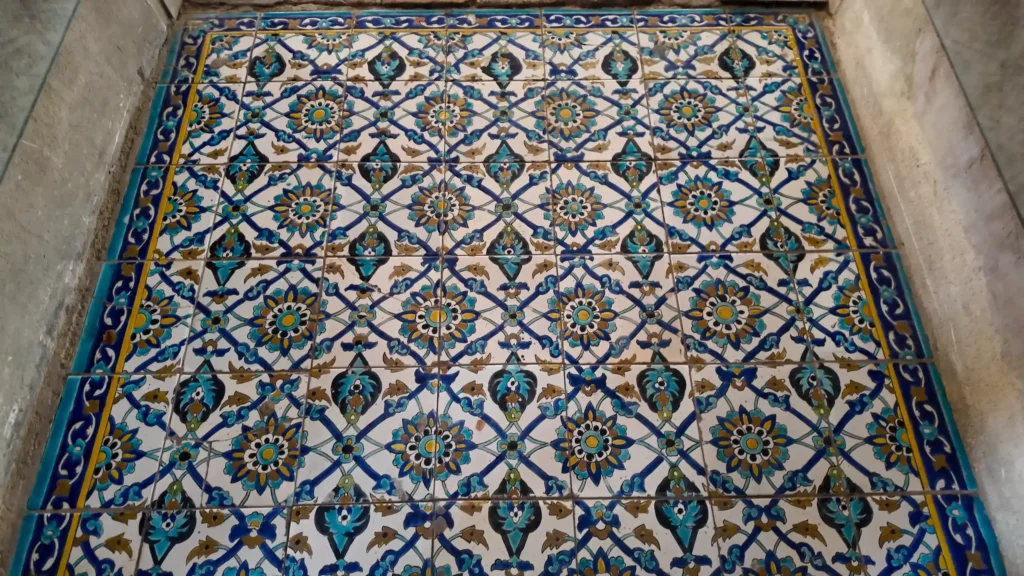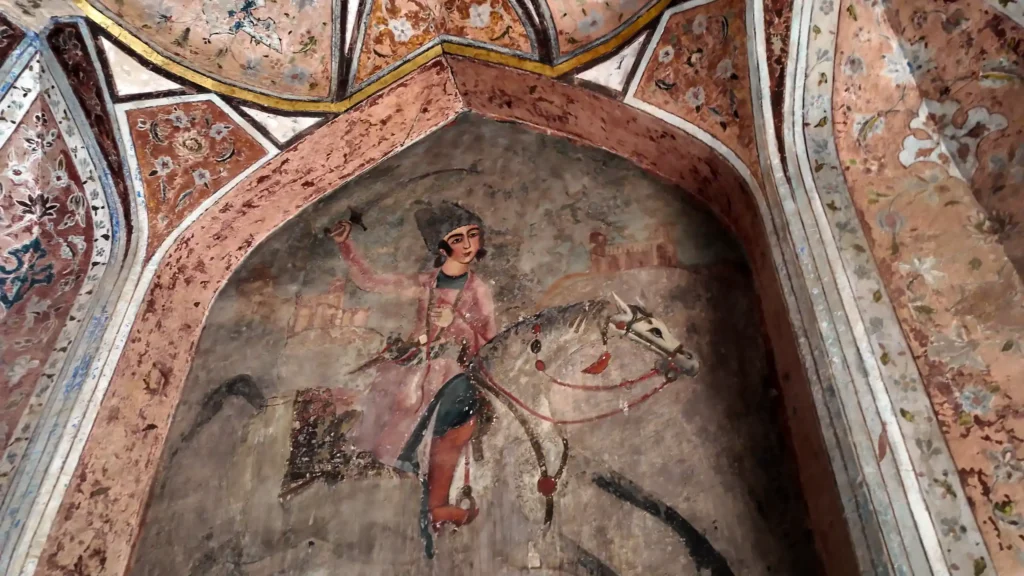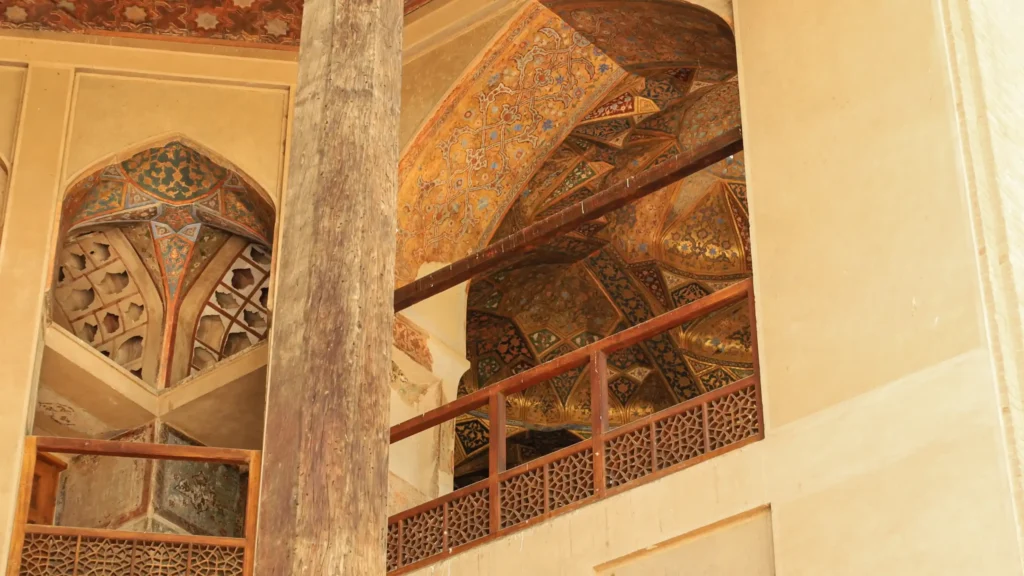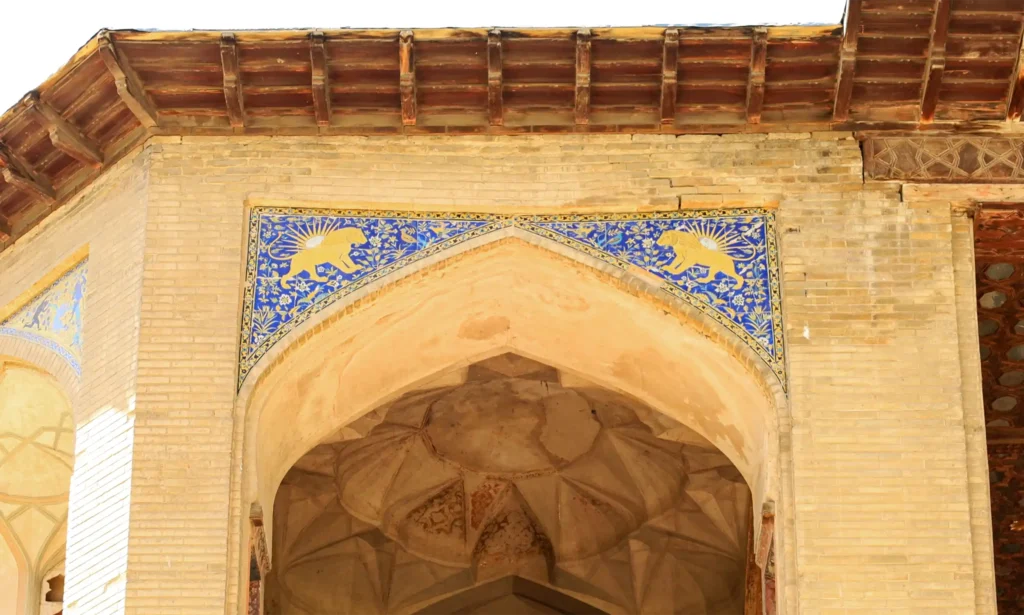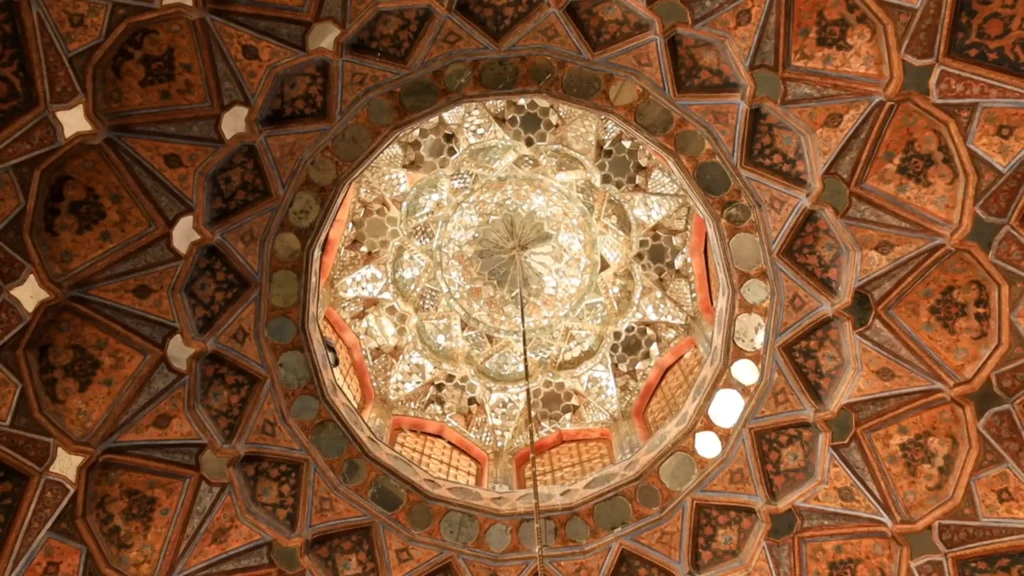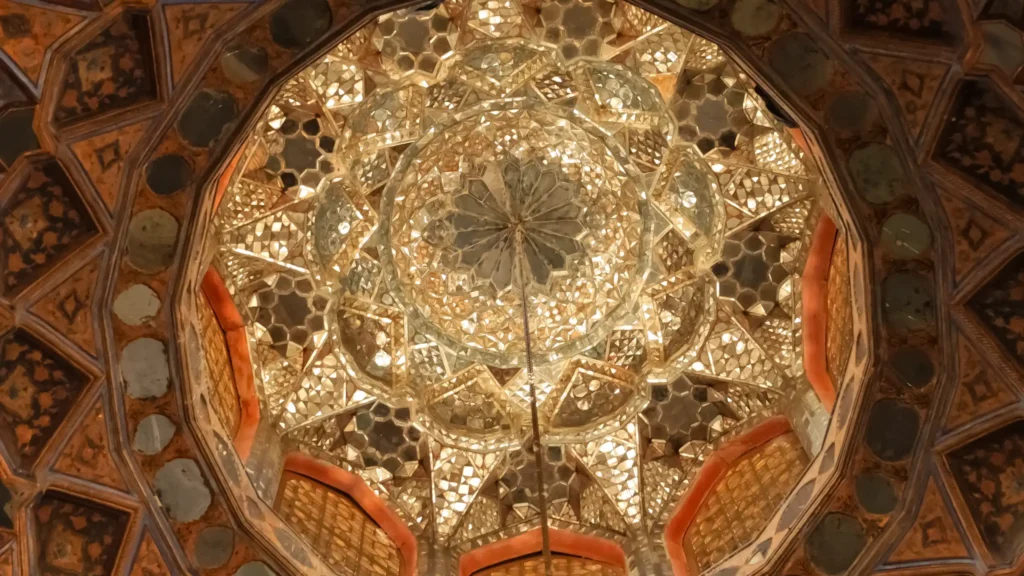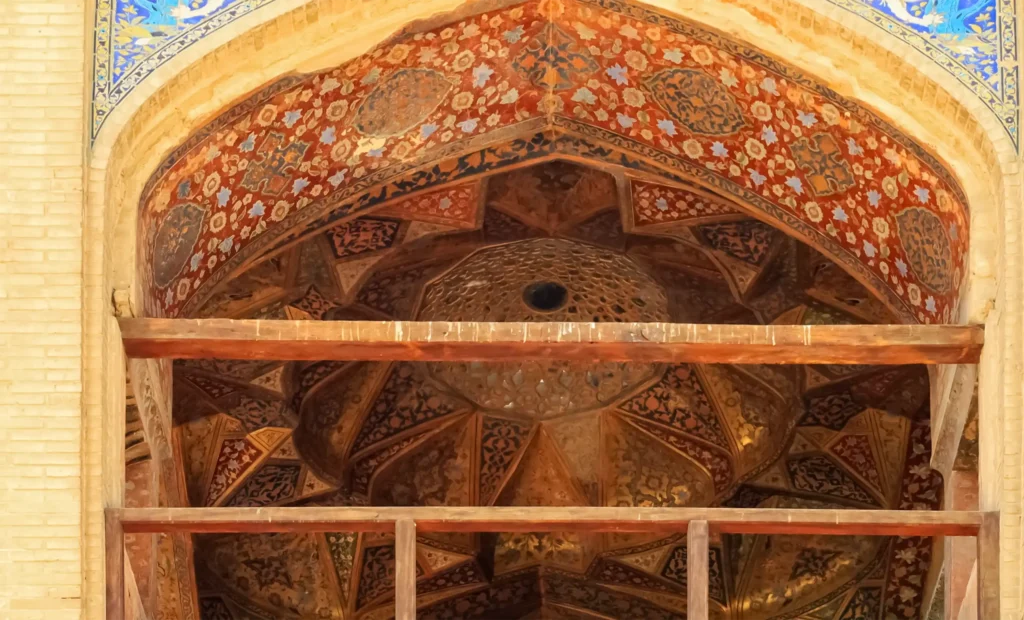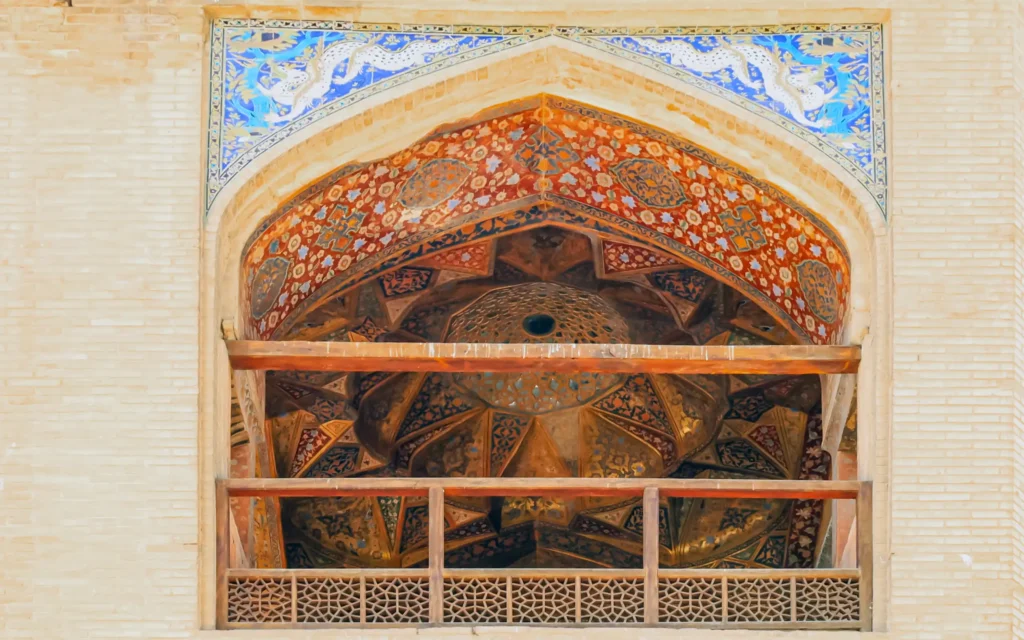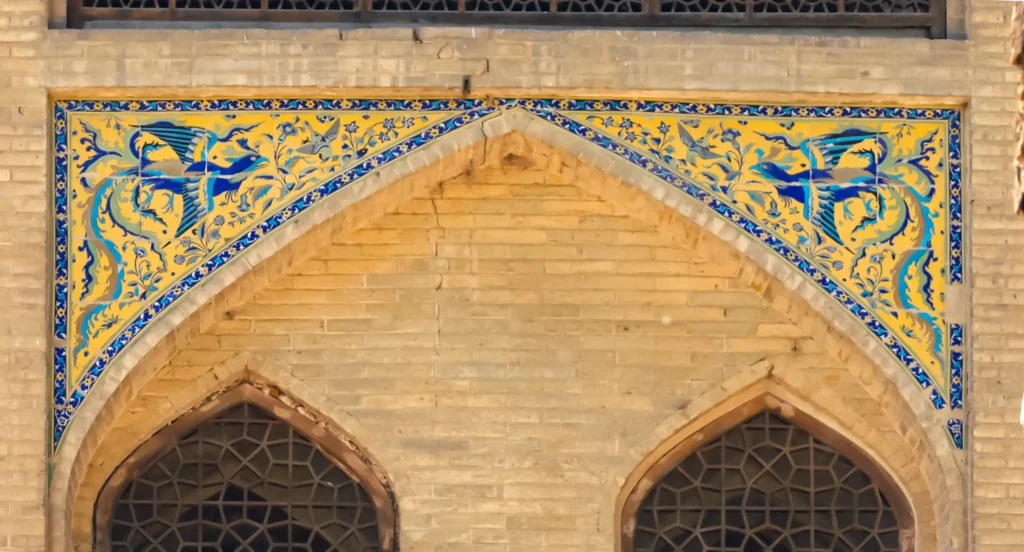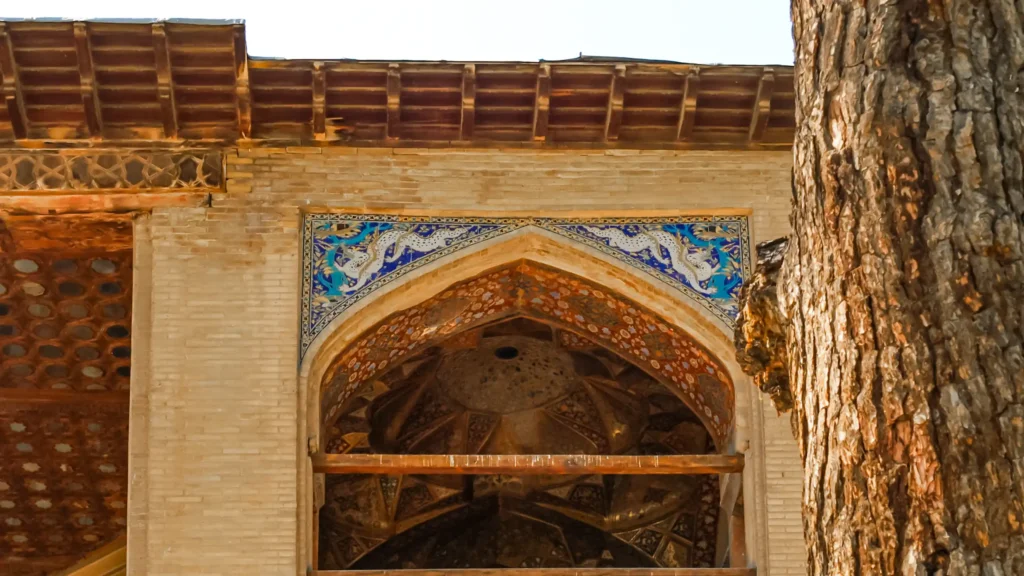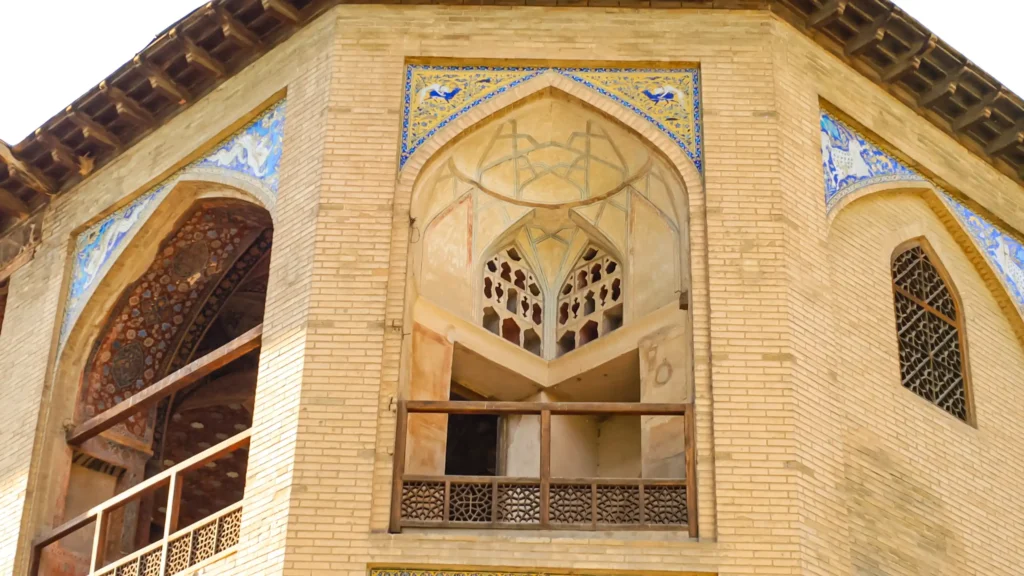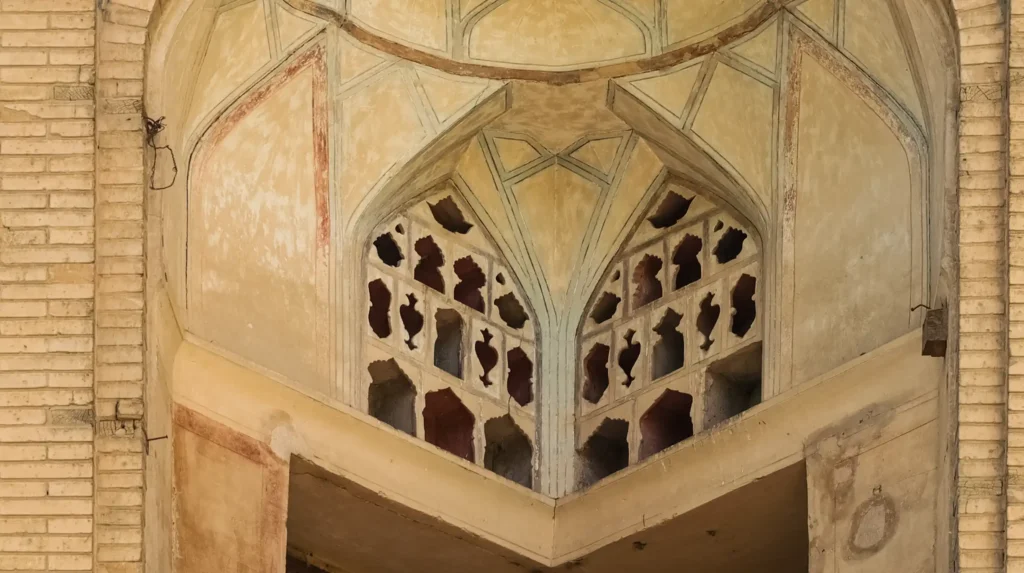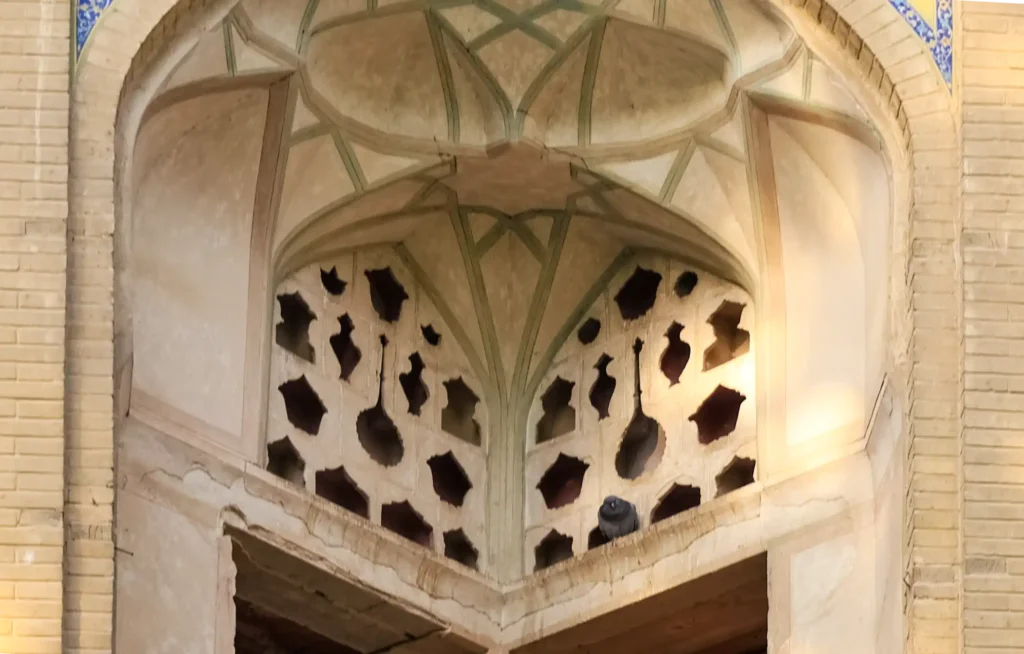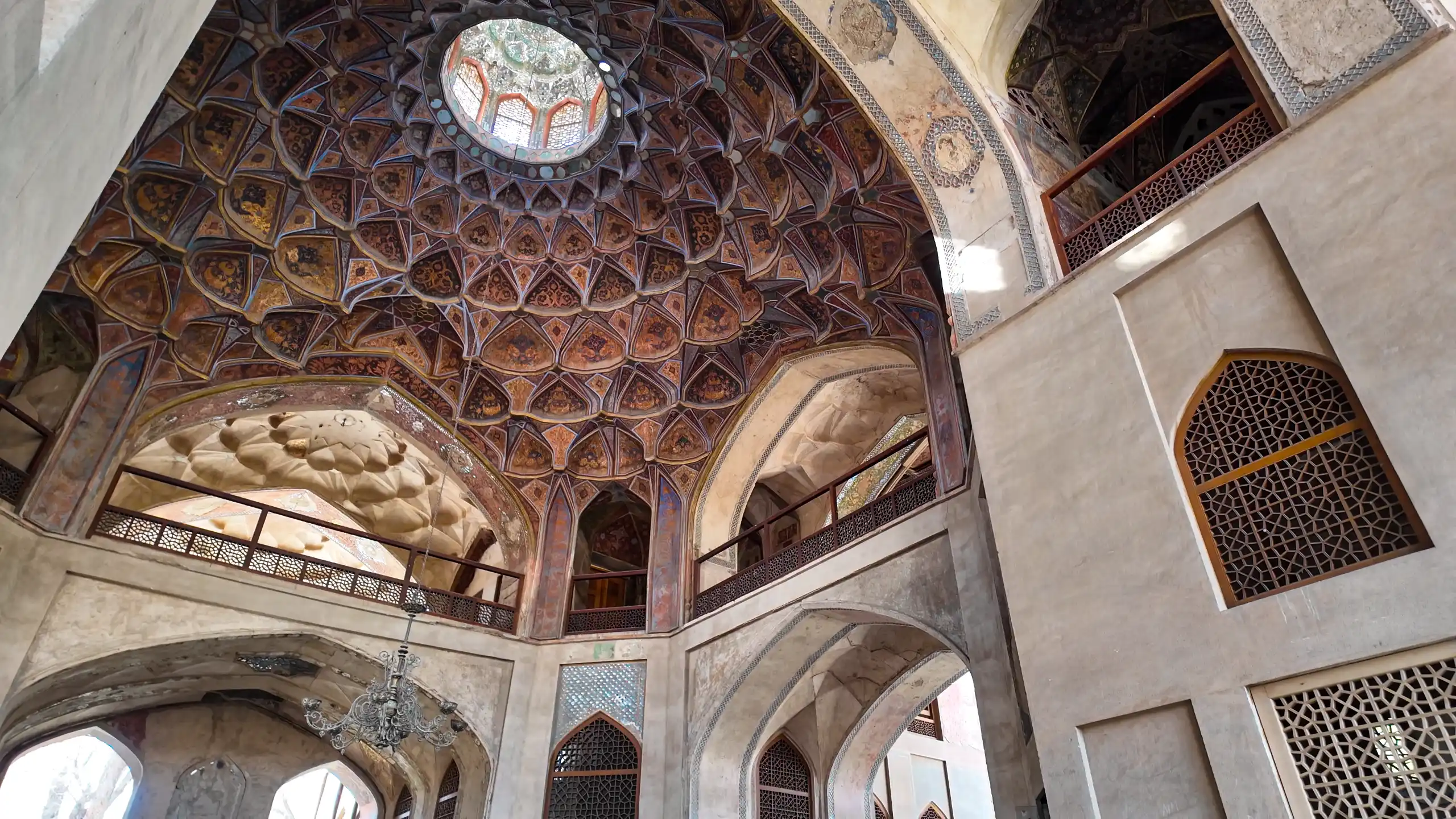
Safavid Ornamentation, Symbolism, and the Harmony of Iranian Aesthetics
Among the masterpieces of Safavid architecture, the Hasht Behesht Palace in Isfahan stands out not only for its spatial harmony but also for the sophistication of its decorative art. Built around 1670 during the reign of Shah Suleiman I, this pavilion represents the zenith of Persian ornamental craftsmanship — a delicate fusion of geometry, color, light, and symbolism that reflects the Persian vision of paradise on earth.
Historical Background and Patronage
The garden that originally enclosed the palace was known as the Bagh-e Bolbol or “Nightingale Garden,” separated from the royal Naqsh-e Jahan complex during the reign of Shah Abbas I. Construction of the pavilion continued under Shah Safi and Shah Abbas II, and was finally completed by Shah Suleiman, who is regarded as its main patron.
The name of the master mason, Maqsud, appears in a poem by Mirza Mohammad-Taher Nasr-Abadi, one of the most renowned poets of Safavid Isfahan, who praised the architectural and decorative excellence of the palace. Another poet, Sayer of Mashhad, attributed the tilework to the year 1102 AH (1690–91 CE), confirming that the building’s intricate ornamentation belongs to the mature phase of the Safavid era.
Travelers and historians alike — including Jean Chardin, Pascal Coste, and Madame Dieulafoy — admired the splendor of Hasht Behesht, describing its interior as “a living garden of color and light,” unrivaled in harmony and grace.
- 00:00 🎶 Introduction – entering Hasht Behesht Palace
- 00:23 🏛 Prologue: Safavid grandeur in the heart of Isfahan
- 01:37 🌲 The formation of Hasht Behesht within Bagh-e Bolbol and the Chaharbagh axis
- 03:26 💫 The meaning behind the name Hasht Behesht (Eight Paradises)
- 04:25 💧 The mystery of water in Persian pavilions — from inner waterfall to the Pearl Pool
- 08:13 🌿 The central pool, the dome, and the interplay of light and reflection
- 09:02 📐 The cross-shaped plan and the hidden Golden Geometry of Persian design
- 09:45 🏡 Site plan and analysis of the lower and upper floors
- 14:49 🌬 Natural ventilation, soft light, and harmony through the seasons
- 15:45 💎 Transparency within solidity — the paradox of Persian architecture
- 16:45 🎨 Interior ornamentation — from stucco and painting to mirrorwork and gilding
- 18:31 ✨ The Golden Room: peak of Safavid elegance and craftsmanship
- 19:21 🧱 The exterior façade — symbolic animal and floral motifs
- 22:29 📖 The palace as a mirror of Iranian identity and culture
- 23:13 🕊 Conclusion – continuing the Journey into Architecture
Stucco and Gilded Relief Work
Among the most distinctive features of Hasht Behesht’s decoration is its stucco relief (gachbori), a fine plaster technique used to model intricate vegetal patterns, arabesques, and symbolic motifs such as vases, carafes, and goblets.
These elements were often gilded, covered with thin layers of gold leaf or powdered gold to capture light and emphasize relief contours. The result was an ever-changing surface that responded dynamically to sunlight and shadow throughout the day.
This method, executed by master craftsmen of Isfahan, demanded exceptional precision and patience. Each surface was prepared with successive layers of plaster, polished, and painted with mineral pigments like lapis lazuli and red ochre before gilding — creating the luminous finish characteristic of Safavid interiors.
Wooden Ceilings and Painted Ornamentation
The palace’s wooden ceilings represent a remarkable synthesis of geometry and painterly expression. Floral and avian motifs — tulips, peacocks, and nightingales — are painted in radiant hues of blue, green, gold, and ochre. These motifs symbolize life, renewal, and the unity of nature and art.
The most celebrated example of this artistry is the Golden Room, located on the upper northwest corner of the pavilion. Here, gilded arabesques intertwine with turquoise and lapis pigments to create a sense of ethereal brilliance. The harmony of colors and patterns evokes the mystical atmosphere of paradise — Behesht — for which the palace is named.
Wooden beams and frames are delicately painted and occasionally inlaid with small mirror fragments, integrating painting, carpentry, and illumination into a single aesthetic language.
Mirror Mosaic and the Language of Light
The mirror mosaic (āina-kāri) of Hasht Behesht exemplifies Safavid fascination with light and reflection. Small, geometrically cut mirrors — arranged in stars, polygons, and floral rosettes — transform static walls into shimmering planes of radiance.
Under daylight or candlelight, the surfaces glimmer and shift, filling the rooms with a sense of infinite depth and motion.
Beyond its visual appeal, mirrorwork carries deep metaphysical meaning in Persian art. The mirror is a symbol of divine reflection — a metaphor for the human soul purified to reflect the eternal light. Thus, the decorative mirrors of Hasht Behesht unite physical beauty with spiritual symbolism, embodying the concept of “illumination through art.”
Tilework and Islamic Ornamentation
Exterior façades and inner walls display an array of seven-color tilework (Haft-Rang) and mosaic tile panels, combining floral arabesques, vegetal scrolls, and symbolic patterns.
Cobalt blue, turquoise, ivory, and gold dominate the palette, evoking harmony between sky, water, and earth — the three sacred elements of Persian aesthetics.
The tile compositions not only enhance beauty but also express an architectural rhythm that unites structure and ornament. Repeating patterns and geometric borders guide the viewer’s eye across surfaces, establishing visual continuity between inside and outside.
These rich Islamic decorative patterns and motifs — such as those featured in the Islamic Decoration Collection — illustrate the enduring principles of symmetry, repetition, and abstraction that define both Persian and Islamic ornamentation.
Symbolism in Decorative Imagery
The iconography of Hasht Behesht includes a diverse range of symbolic and mythological motifs.
Lions represent majesty and power; gazelles, grace and gentleness; birds, the soul’s freedom and spiritual ascent; while mythical creatures such as the Simorgh and dragons signify cosmic balance and protection.
These images, interwoven with vegetal and geometric forms, create a visual language that transcends mere decoration — an allegory of the Persian worldview, where beauty is a path to understanding the divine order.
Gilded Paintings and Qajar Additions
During the late Safavid and early Qajar periods, Hasht Behesht also featured gilded paintings depicting royal portraits, floral medallions, and hunting scenes.
European travelers like Dieulafoy and Kaempfer recorded these murals, describing images of Fath-Ali Shah Qajar and his sons.
Although most of these paintings were later covered by plaster during 20th-century restorations, traces of their gilding and composition remain visible beneath the upper layers of stucco.
This historical layering gives Hasht Behesht a unique palimpsest quality — a building that carries the memory of changing artistic epochs within its very walls.
Integration of Decoration and Architecture
In Hasht Behesht, ornamentation and architecture are inseparable.
The decorative elements do not merely embellish; they define the space, shape the experience, and express the palace’s philosophical foundation.
Muqarnas domes, mirror mosaics, painted ceilings, and relief stuccoes form a unified system in which geometry and craftsmanship converge with light, sound, and movement.
This synthesis reflects the Persian ideal of “Tazyeen” — decoration as a means of achieving harmony between matter and meaning, between the earthly and the eternal.
Conclusion
The decorations of Hasht Behesht Palace represent the highest refinement of Safavid art — a perfect marriage of craft, symbolism, and spirituality.
From shimmering mirrorwork to intricate stucco reliefs, from gilded ceilings to ceramic tiles, every detail contributes to a holistic architectural symphony that continues to inspire admiration.
Hasht Behesht stands not merely as a monument of the past but as a living testament to the Iranian conception of beauty — where architecture becomes poetry, and ornament becomes a reflection of paradise itself.

